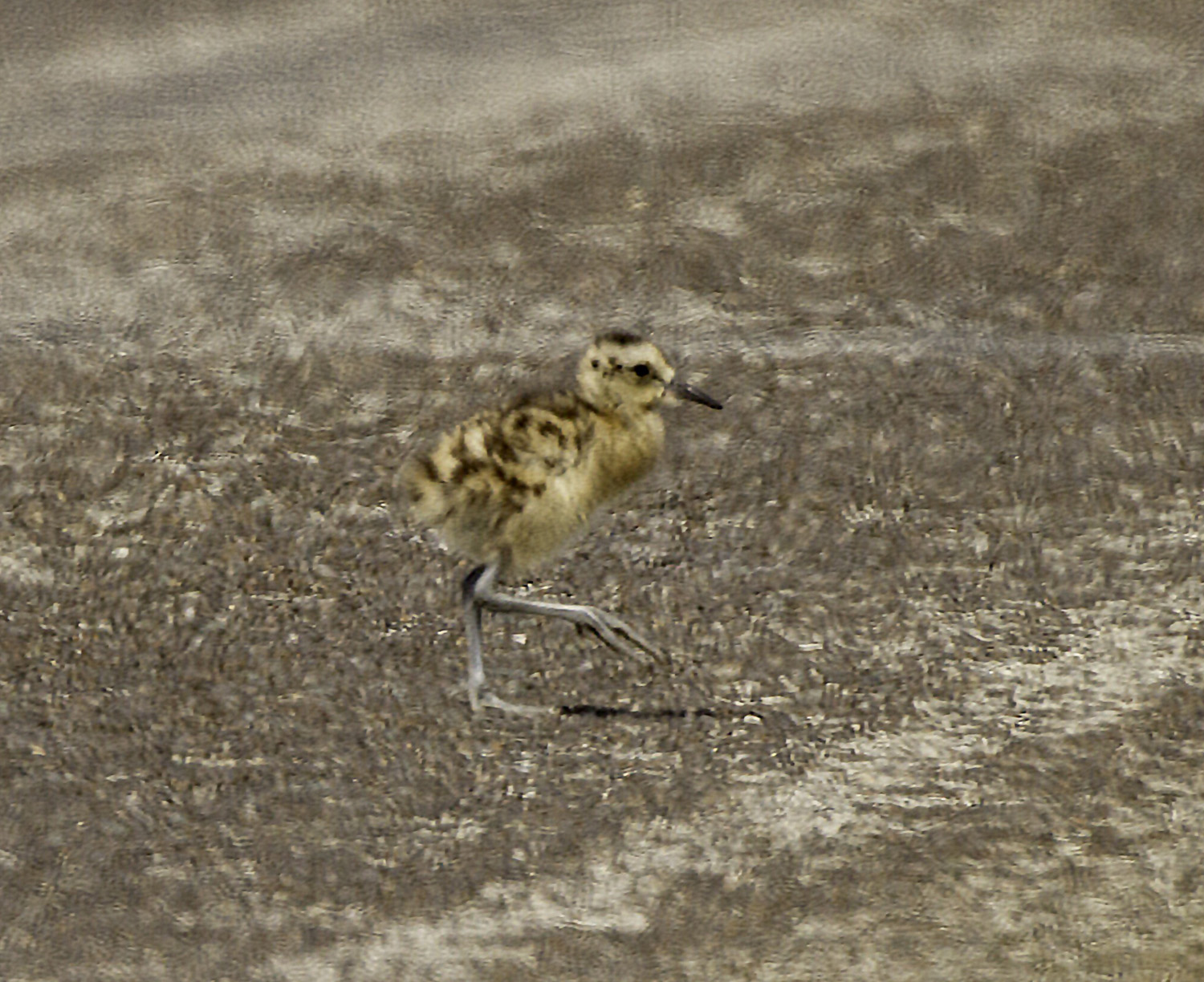2017 Breeding Season
In the LPS area, almost all of the 22 nests found were electric fenced, and half hatched chicks. The electric fences, therefore, had a 50% success rate, compared to 2015 and 2016 when all except 3 nests each year were predated at the egg stage (NB all three nests that hatched in 2016 were also fenced). Only two nests were predated by foxes, compared with more than half in 2015 and 2016. Four were predated by Crows, 4 failed for reasons unknown, two did not hatch (probably due to agricultural disturbance) and one was possibly predated by a badger. Mammalian predators therefore accounted for only 3 nests in 2017 compared to well over half in 2015 and 2016. The electric fences were highly effective in combating mammalian predators.

Curlew chick. (Photo: John Harding)
An increase in the number of chicks hatched increased the chances that some would fledge, and 3-5 did from 2-3 nests (compared to no fledged young in 2015 and 2016). Although this success rate is not sufficient for a sustainable population, it is a big step in the right direction, and the fledging rate can hopefully be increased as experience grows and new interventions are trialled. It is essential that the work continues in 2018 and beyond. This is a primary aim of the SWT / SOS “Save our Curlews” campaign and appeal.
The Upper Onny Wildlife Group continued monitoring its local Curlew population, and found 27-29 pairs, the loss of a further pair. The decline 2004 – 2017 is now almost one-third (32%) in 13 Years.
The Rea Valley and Camlad Valley CWGs, which together with the Upper Onny group cover the whole LPS area (and slightly more), found 9-11 and 7 pairs respectively. Part of the Camlad area is in Wales, but 4-5 pairs were in England. The CWGs therefore found 40-44 pairs in England
The two new Community Wildlife Group (CWG) surveys, in the Strettons area and north of Oswestry (the Three Parishes of Weston Rhyn, St Martins and Gobowen), both found several pairs of breeding Curlews, but fewer than the number found in the same squares during the Bird Atlas 2008-13
In addition to them, and the three CWGs in the LPS area, Upper Clun and Clee Hill CWGs have also been counting Curlews. The Upper Clun group found 8-9 pairs, a decline of 60% since monitoring started in 2007. Results of the Clee Hill survey in 2017 have not yet been analysed, but 9 pairs were found in 2016. This represents a net population loss of four pairs, a decline of 31% in only five years since monitoring started in 2012.
The Long Mynd Breeding Bird Project found 3 pairs, but all failed.
For further information about the Community Wildlife Group surveys, see their website, www.ShropsCWGs.org.uk
The various CWG reports will be published over the winter, and will be available on the website.
Return to Save Our Curlews Campaign
